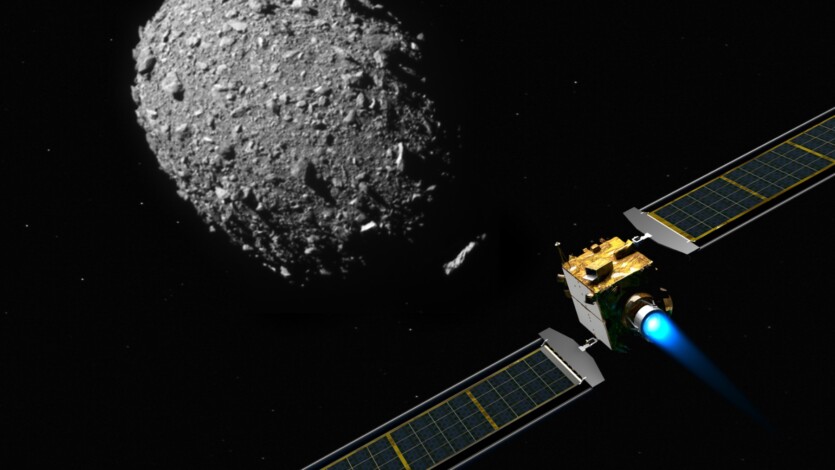
On September 26, 2022, the NASA DART spacecraft collided with an asteroid Dimorphos at a speed of about 24 thousand km/h, which changed both the shape of the space object and its trajectory.
It was a historic demonstration of systems to protect the planet from asteroids. However, the results of a new study show that the asteroid fragments do not behave as expected, which casts doubt on the success of future similar missions.
The collision occurred at a distance of 11 million kilometers from Earth. After that, dozens of large fragments of Dimorphos began to move with greater inertia, forming far from random patterns.
According to the results of the analysis of images obtained from The Italian Asteroid Imaging Cubesat (LICIACube) satellite, which flew with DART to observe the impact, showed a total of 104 fragments, each ranging from 0.2 to 3.6 meters in diameter, scattered in different directions from the destroyed asteroid. The astronomers concluded that these fragments had three times the momentum, probably resulting from additional shocks.
«This additional factor changes the physical laws that we need to take into account when planning such missions. We saw that the boulders were not scattered randomly. Instead, they were grouped into two fairly precise groups, in the absence of material elsewhere, which means that something unknown is involved», — the author of the study states, is an astronomer at the University of Maryland, Tony Farnham.
According to a co-author of the study, an astronomer from University of Maryland, Jessica Sunshine, if necessary change the asteroid’s trajectory, heading towards the Earth, all these nuances become very important. The scientist compared it to a game of billiards, where failure to take into account all the data can lead to a fatal mistake.
In April 2024, astronomers found that some of the largest fragments of Dimorphos are heading toward Mars and may collide with the Red Planet in about 6 thousand years. Potentially, this could pose a threat to the first human Martian colonies.
Last August, modeling using LICIACube data also showed that some of the smaller fragments of the asteroid could collide with Earth in about 30 years. However, despite all these uncertainties, the kinetic impact method still remains the most viable option for protecting against the real threat of an asteroid impact. Researchers will get a more accurate picture of what is happening to the Dimorphos debris next year when the Hera spacecraft will arrive at the asteroid to carefully study the consequences of a collision with DART.
Source: LiveScience

Spelling error report
The following text will be sent to our editors: